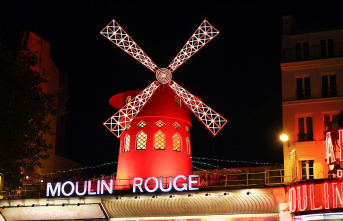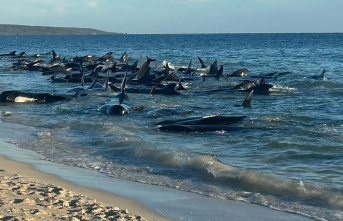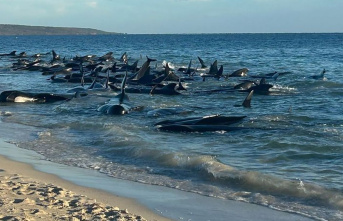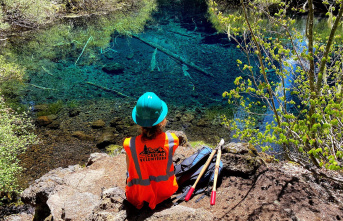There is an ocean hidden within the Earth, just a few hundred kilometers below its crust. This ocean is most likely the largest in the world. This water does not swim in large pools. No fish plumb its depths. This ocean is actually water in its most loosest form: it is composed of hydrogen and oxygen atoms that have been chemically bound to surrounding rocks. It is, at least most of it.
Geoscientists from the University of Clermont-Auvergne, France, Denis Andrault, and Nathalie Bolfan–Casanova have created a new model which shows that more of this water is transiting than previously thought. The mantle, the layer between the crust and core of the planet's rock, can become saturated with chemically dissociated liquids. This can cause it to turn into a water-rich molten solution. It seeps back towards the crust when it does. This is what researchers call mantle rain.
The Earth's habitability is determined by the water exchange between the mantle, surface, and atmosphere. Scientists know that water can be pulled down to the mantle through subducting plates, and then brought back to the surface via things like volcanic eruptions and hydrothermal vents. Earth's sea level will remain stable if the deep water cycle between the surface and the mantle is in balance. If it is not, the planet could be anything from a single global ocean to a desiccated one.
Earth's habitability has greatly benefited from the fact that Earth’s sea levels have remained stable over billions and years. However, previous research on the mantle suggests that it could have been quite different. Based on the mechanics of deep water cycles, it is estimated that almost twice as much water is transported into the mantle than is released to the surface.
Andrault says that there is a layer below the surface that could hold water. He says the current consensus is that water should remain there for all time. If this were true, Earth's surface water would slowly decrease, and be locked away in its mantle.
This is where mantle rainfall comes in.
Bolfan-Casanova and Andrault show in their study that mantle rainfall could be sufficient to maintain balance in the deep water cycle.
Researchers looked into what happens to rock-bound water and rock slabs that are subducting. This was how mantle rain is discovered. The researchers found that the rock melts as the water falls, which causes it to release its heat and pressures.
Andrault says that the melt is similar to a slurry. Imagine a mixture of sand grains, glued together with mud between. This is the mantle rainfall.
This melt becomes lighter as more rocks melt and more water is released from the rock. The water bonds with the minerals in the upper mantle, decreasing their melting points. This causes more melting, which releases more water.
Yoshinori Miyazaki, an Earth and Planetary Scientist at the California Institute of Technology, said that Bolfan-Casanova and Andrault's mantle-rain model "shows there could possibly be another way to transport the water towards the surface in additional to the global-scale convection of its mantle."
Miyazaki states that water doesn't like being in the rock phase. "It will happily escape into the melt phase and percolate upwards." Andrault said that more research is needed to determine how much water is escaping this way.
According to the mantle rain model, there is only one ocean mass currently in the upper mantle. Andrault says, "This ensures that water will always exist on Earth's surface together with the ocean below."
Miyazaki says that there is still much to be learned about the deep-water cycle. It has managed to maintain Earth's average sea-level relatively constant over the past 500,000,000 years. This is a remarkable feat that will allow life to continue in a sustainable environment.
This article comes from Hakai Magazine. It is an online publication that covers science and society in coastal ecosystems. You can find more stories like these at hakaimagazine.com.
Similar stories from Hakai Magazine












